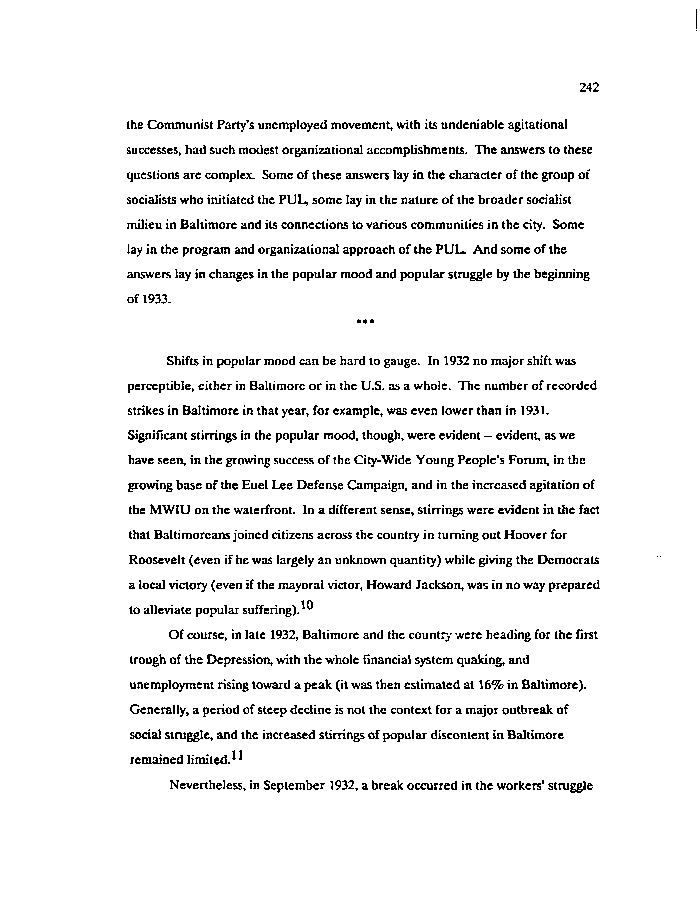|
242
the Communist Party's unemployed movement, with its undeniable agitational
successes, had such modest organizational accomplishments. The answers to these
questions are complex. Some of these answers lay in the character of the group of
socialists who initiated the PUL, some lay in the nature of the broader socialist
milieu in Baltimore and its connections to various communities in the city. Some
lay in the program and organizational approach of the PUL. And some of the
answers lay in changes in the popular mood and popular struggle by the beginning
of 1933.
Shifts in popular mood can be hard to gauge. In 1932 no major shift was
perceptible, either in Baltimore or in the U.S. as a whole. The number of recorded
strikes in Baltimore in that year, for example, was even lower than in 1931.
Significant stirrings in the popular mood, though, were evident — evident, as we
have seen, in the growing success of the City-Wide Young People's Forum, in the
growing base of the Euel Lee Defense Campaign, and in the increased agitation of
the MWIU on the waterfront. In a different sense, stirrings were evident in the fact
that Baltimoreans joined citizens across the country in turning out Hoover for
Roosevelt (even if he was largely an unknown quantity) while giving the Democrats
a local victory (even if the mayoral victor, Howard Jackson, was in no way prepared
to alleviate popular suffering).
Of course, in late 1932, Baltimore and the country were heading for the first
trough of the Depression, with the whole financial system quaking, and
unemployment rising toward a peak (it was then estimated at 16% in Baltimore).
Generally, a period of steep decline is not the context for a major outbreak of
social struggle, and the increased stirrings of popular discontent in Baltimore
remained limited.11
Nevertheless, in September 1932, a break occurred in the workers' struggle
|

